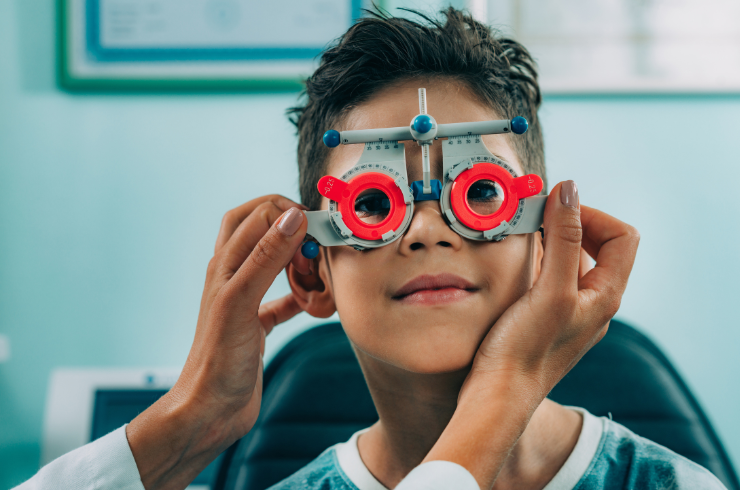Top 5 Vision Therapy Exercises

Vision therapy recommend more than 200 different eye exercises and often administer them with simple aids: glasses with different-coloured lenses, eye patches, bull's-eye targets and beaded strings. What follows are simple vision therapy exercises that anyone can do at home.
1. Call The Ball
Write letters or numbers of various sizes on a softball, kickball or soccer ball. Hang it from the ceiling on a string and give it a push in any direction. As it swings, call out the letters or numbers you see. The Optometric Extension Program Foundation markets dozens of visual exercise items, from low-tech flashcards aimed at day care children to sophisticated computer systems for behavioural optometrists who specialize in athletic eye/hand coordination. If you like to delve deeper into vision improvement, contact the OEP for a catalog or a referral to a behavioural optometrist near you.
2. Follow Your Thumb
Several times each day, hold your thumbs out at arm's length and move it in slow circles, crosses, Xs and in-and-out motions. Without moving your head, follow it with your eyes. Keep it - and the rest of the room - in focus as much as possible.
3. Palming
This helps relax tired eyes. Briskly rub your hands together for 15 seconds or so until they feel warm. Close your eyes and cup your warm palms over them. Make sure your palms are cupped enough so that they do not touch your eyelids. Your fingers should overlap and rest on your forehead. Holding this position, breathe deeply and regularly for a few minutes.
4. Bead And String
Thread three coloured beads along a piece of string or yarn about six feet long. Fasten one end to a wall at eye height and hold the other to the tip of your nose. Slide one bead close to the wall, the second about four feet from your nose and the third about a foot away from you. Look at the farthest bead. You should see two strings forming a V with the bead at its point. Next focus on the middle bead. You should see two strings forming an X with the bead at its cross point. Then look at the nearest bead. You should also see an X. if your eyes work as a team, as they should, you will always see two strings crossing when you focus on a bead. If not, you may see only one string, suggesting that your brain is suppressing information from your weaker eye. If you see only one string, consult a behavioural optometrist.
5. Look Away
If you do close-focus work - reading, sewing, wiring, or computer work - tack the front page of a newspaper to a wall about eight feet away. Every ten minutes or so, take a short break from your work and look at it, scanning the large headline type, the smaller subheads and the fine print. This helps maintain your focusing ability and minimizes the blurred vision many close-focus workers experience at the end of the day.





























